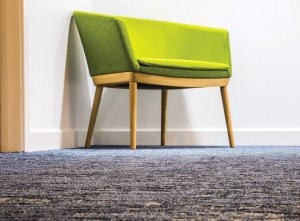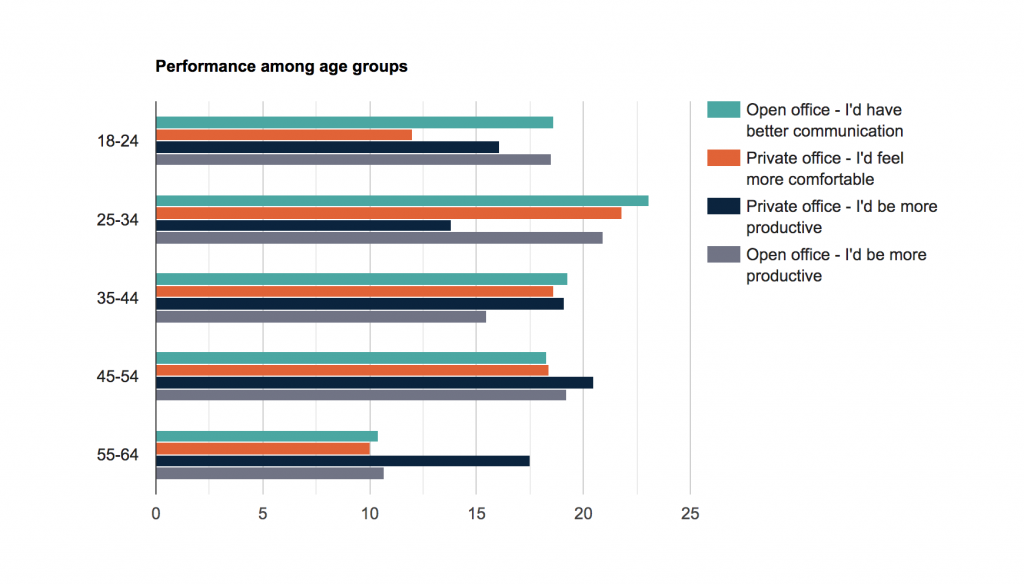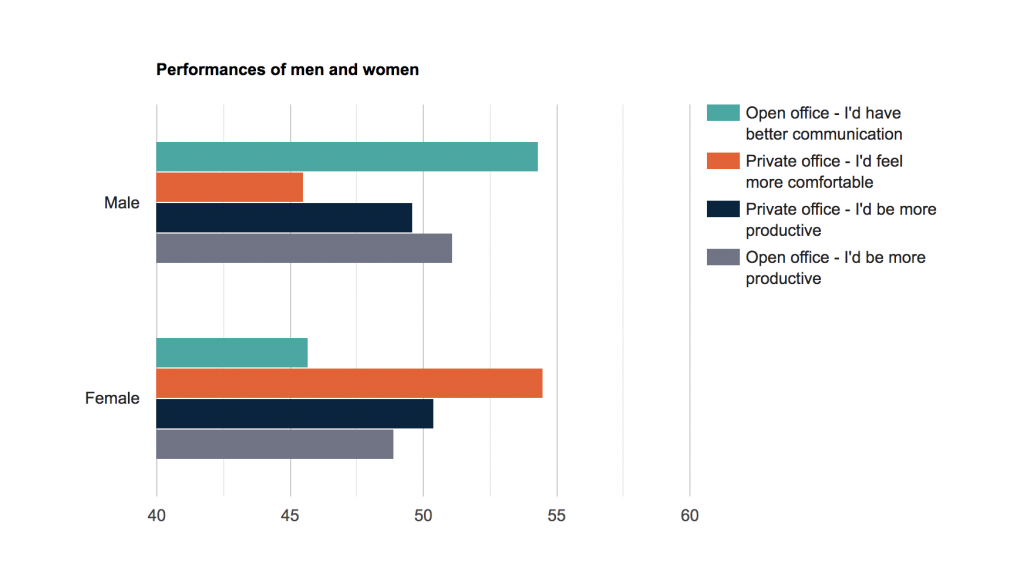
Utilising reclaimed carpet tiles
Since Visualsoft was moving into a newly carpeted building, we gave them an office design that utilised reclaimed carpet tiles without compromising on design.
Listening to employees’ wishes regarding the manager’s position in the office is key to striking a balance between productivity and a healthy company culture, new research suggests.
And although an open-plan working environment remains a popular choice for many companies, with more than 8 million UK employees thought to work in this inclusive style of office, it’s not necessarily the best design for productivity levels. In fact, recent reports have indicated that it could even be detrimental to output.
We decided to find out exactly what employee preferences are when it comes to workspace design and where the department manager’s position fits in with it. In a survey of more than 650 members of the UK public, we asked whether having the boss in the room affects performance. The overall results, as shown below, highlight a general opinion that an open-plan workspace where the manager is present is not necessarily conducive to increased productivity.

Cultural considerations
Of course, every business varies in staff demographics and core values, and the survey findings certainly reflect different preferences among age and gender groups.
For example, while employees aged 18 to 44 expressed more favour towards an open-plan scheme, for reasons of both better communication and productivity, their 45- to 64-year-old counterparts appeared to perceive their productivity as higher when their manager is situated in a private office.
This could well be a reflection of the times, whereby younger generations are used to a more flexible company culture in which the boss sits among the wider team and is easily approachable. This is evident in the open-plan offices that are commonplace among today’s millennial-dominated companies, which favour teamwork and open communication. But more mature professionals are familiar with the traditional set-up in which the managerial desk is closed off from the rest of the office.
Thinking about a new design for your office but don’t know where to start? Download your free guide here.

Similarly, the survey revealed discrepancies in the preferences of male and female employees: while men stated feeling more comfortable in an open-plan space, women prefer to work with their manager in a private office. This is an interesting finding, since it appears to contradict previous research suggesting male employees thrive in a more hierarchical set-up while it is women who favour an ‘egalitarian’ office culture and layout.

Of course, it’s important to take into account the type of business: a sales-driven workforce, for example, is more likely to thrive in an open-plan environment that encourages constant communication and peer engagement, whereas employees who require private conversations or uninterrupted periods of concentration are likely to struggle under such conditions.
So, for companies whose day-to-day operations comprise both dynamics – publishers, for example – can a compromise in office layout be struck and a culture in which all employees thrive be reached?
Managers may find themselves asking these very questions when working out the optimum design and configuration for their workspace. Deciding on whether they should position themselves among the wider team or in a separate office requires careful consideration around a number of factors:
But perhaps the most important consideration of all is what your employees think. Despite the continued popularity of open-plan offices, our survey results show that, overall, they are not necessarily conducive to the comfort or productivity of staff.
When it comes to planning for an office fit out, a basic open-plan design is often favoured as a cheaper option. However, as the UK Workplace Survey states, it ‘often fails to support work activities as well as [offices] providing a variety of enclosed environments, with job satisfaction, performance, and at-work relationships suffering as a result’.
That’s not to say that an open-plan layout can never be effective. As our research highlights, trends in opinion change with variables such as age and gender, suggesting it’s a good idea for managers to conduct their own anonymous polls in order to gauge where in the workplace their staff would prefer them to be. Only with this information will those in management positions be better equipped to nurture both a happy company culture and healthy productivity levels.
Managing an effective workplace means investing a little time to listen to employees, and it can go a long way: they’ll feel involved in the decision-making process and supported in their working needs. Indeed, it seems that flexibility and balance are at the core of modern workspace design, which means giving the user – whether a manager or team member – the choice to work where they want to in order to complete the task at hand most effectively. It also means ensuring the environment is collaborative while allowing concentration, creating a space that’s inclusive for all, regardless of working style.
It’s a balance that requires a great deal of thought, planning and understanding of the fact that the traditional office, as we know it, is gone. Fortunately there is a wealth of sector-based expertise and decision-making support available, meaning no business need miss the mark when it comes to helping its employees thrive.

Since Visualsoft was moving into a newly carpeted building, we gave them an office design that utilised reclaimed carpet tiles without compromising on design.

What the office will look like after COVID-19 is the subject of much speculation. Here’s what we believe are the top agile design trends in the aftermath of the global pandemic.

Lighting tips to transform your office into an energy efficient, productive and healthy work space.

See how we addressed office acoustics when we moved Visualsoft from a cellular HQ layout to modern open plan working.